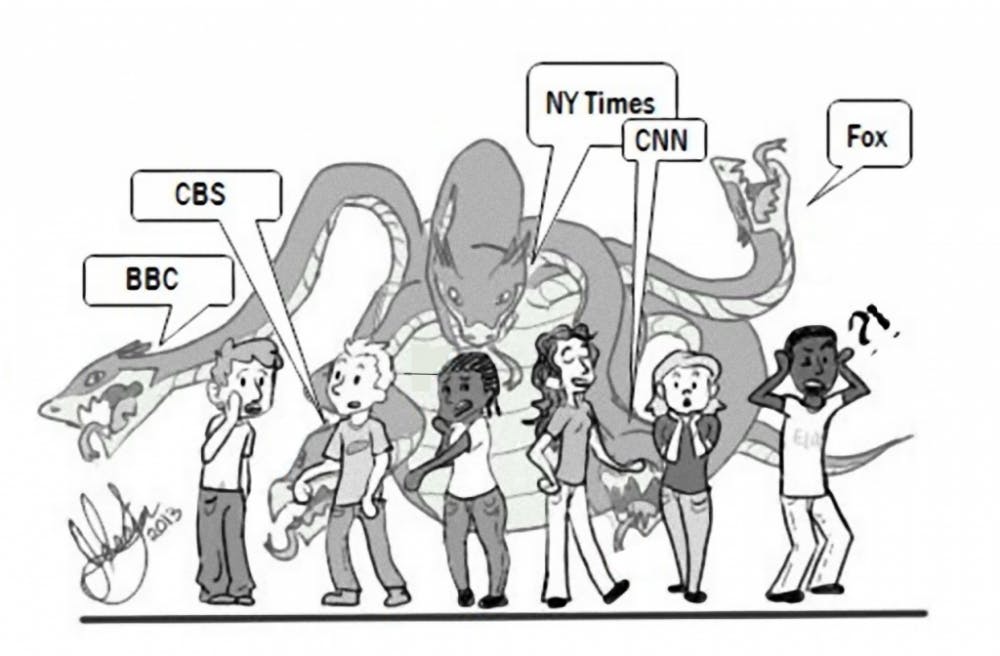After news broke of a North Carolina resolution claiming the state can make its own laws regarding the establishment of religion — one that would question the federal government’s authority to decide what is constitutional — email inboxes overflowed with complaints, comment boards became saturated with concerned citizens and watercooler conversations were abuzz.
At Elon University, many students were misled by the influx of media reports from credible media outlets and social media sources. They were led to believe the state was seriously considering adopting some sort of official state religion.
Accurate and thorough research were not driving the conversation surrounding the subject. Instead, multiple misrepresentations from news sources and the propagation of these stories from blogs, Facebook, Twitter and word of mouth created a distorted interpretation of this resolution. People jumped to conclusions and spread falsities without an accurate understanding of the issue — a representation of the larger problem with the media and the way media consumers intensify issues by propagating misleading information.
The North Carolina House Joint Resolution 494 was not, as widely reported across many news outlets, intended to establish an official state religion. It was meant to deliver a symbolic counter to a lawsuit filed by the American Civil Liberties Union on behalf of several residents who object to Rowan County commissioners’ opening their meetings with Christian prayer.
In short, the resolution was intended to allow the county commissioners to end invocations at public meetings with the words, “In Jesus’ name, amen,” quite different from declaring Christianity the official religion of North Carolina.
Every year in legislatures across the country, scores of resolutions are introduced at the request of constituents that carry little legal weight or promise of being ratified. Reputable news sources are well aware of this, but they still chose to publish the misleading, attention-grabbing story that claimed North Carolina was on the path to establishing an official state religion — and media consumers chose to believe it.
North Carolina House Joint Resolution 494 and the uproar after its proposal serve as a representation of the larger issue with the current media culture and the public’s role in spreading information quickly, whether that information has been confirmed or not. The effect is that stories are often misreported, misinterpreted and blown out of proportion.
As media consumers, we are also guilty of failing to question the validity of the facts. For many, it seems logical to reach a conclusion when multiple reputable news outlets are reporting a semi-uniform set of “facts.” It is easy to interpret the issues as seen through the lens of mass media and through what your friends post on social media, but you may be missing the crux of the issues at hand. This is certainly what happened with regard to Resolution 494.
In order to have a true understanding of the issues, you must resist the temptation to take unfounded conclusions at face value, even if these conclusions are drawn by what you consider to be reliable news sources.
The truth is the media are not the only factor responsible for the dissemination of misleading information. Media consumers also have access to their own ways of publishing content on a variety of social media outlets, meaning we share the responsibility.
By choosing to react to an issue before fully understanding the implications, we sensationalize the stories. A status, blog post or tweet accusing North Carolina of robbing its citizens of religious freedom adds more fuel to the misinformation cycle. Spreading grossly misleading information diminishes the significance of stories that actually have useful social connotations.
Individuals need to be careful not to reinforce the cycle of misinformation by spreading news before obtaining an accurate understanding of an issue. As media consumers, we have not only the ability, but also the responsibility to put an end to the perpetuation of misleading information.
A breaking news story simply cannot be taken for fact. It is our responsibility to sort through various news sources and check our facts to find the real story.


